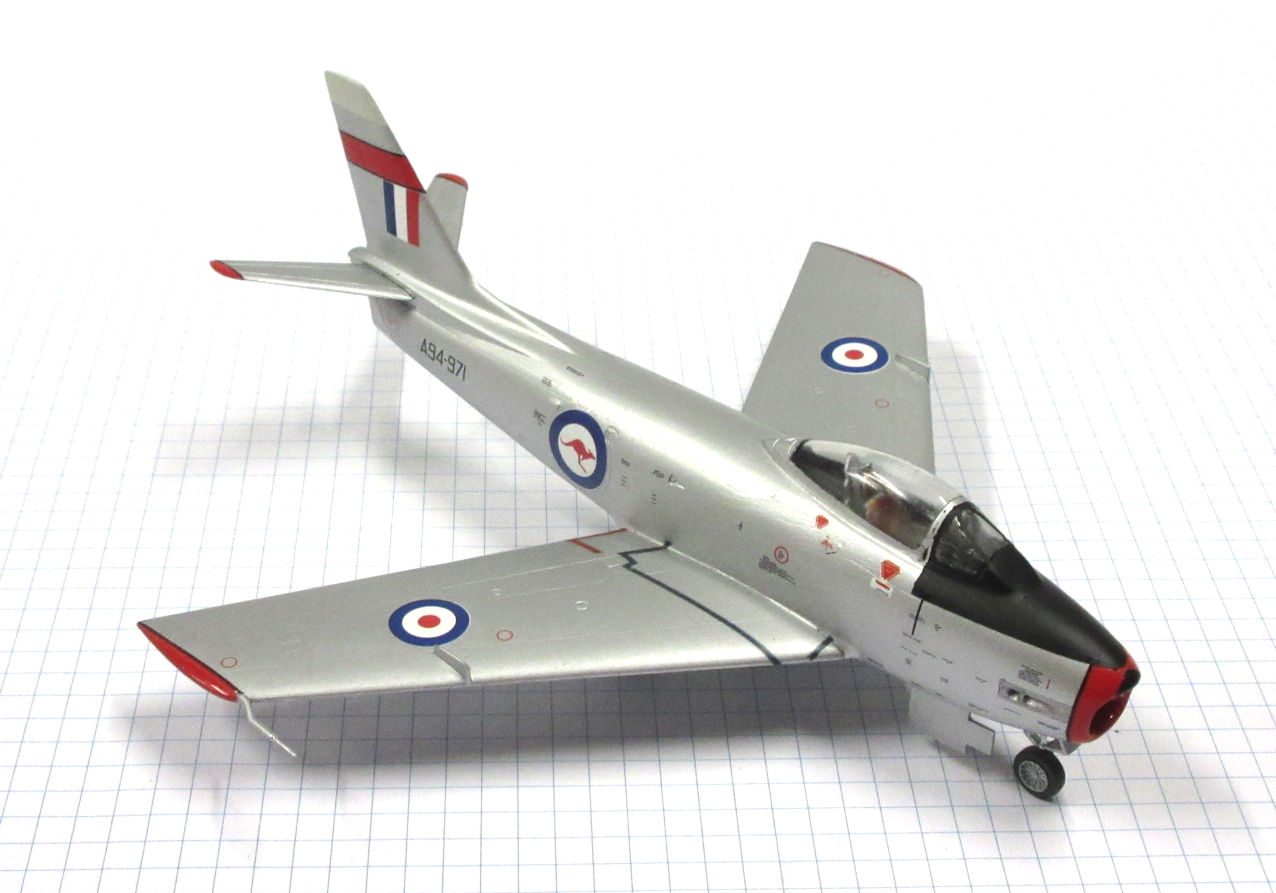Am I giving away my age if I say that I remember when the Royal Australian Air Force was flying CAC CA-27 Avon Sabres? Not that I actually remember seeing one flying. By the time I became interested in aircraft the RAAF was reequipping with Mirage IIIs and who would be interested in watching a clunky old subsonic aircraft when these new, gorgeous, sleek machines were being put through their paces at airshows, So I probably saw Avov Sabres in the ground and in the air but they made no lasting impression on me. On the other hand, I vividly remember a Mirage III on static display and running me finger tips along its smooth, sleek leading edge. But that is another love story.
I might also be giving away my age by saying that I bought this kit at Snowy Mountain Models of happy but distant memory. By then I was aware of the Avon Sabre’s historical significance so I was keen to have a kit of the aircraft and bought it without looking inside the box. I’d already come across High Planes kits and knew they were desirable because that company made injection moulded kits of Australian subjects but also knew that they were usually what one might loosely call ‘very challenging’.
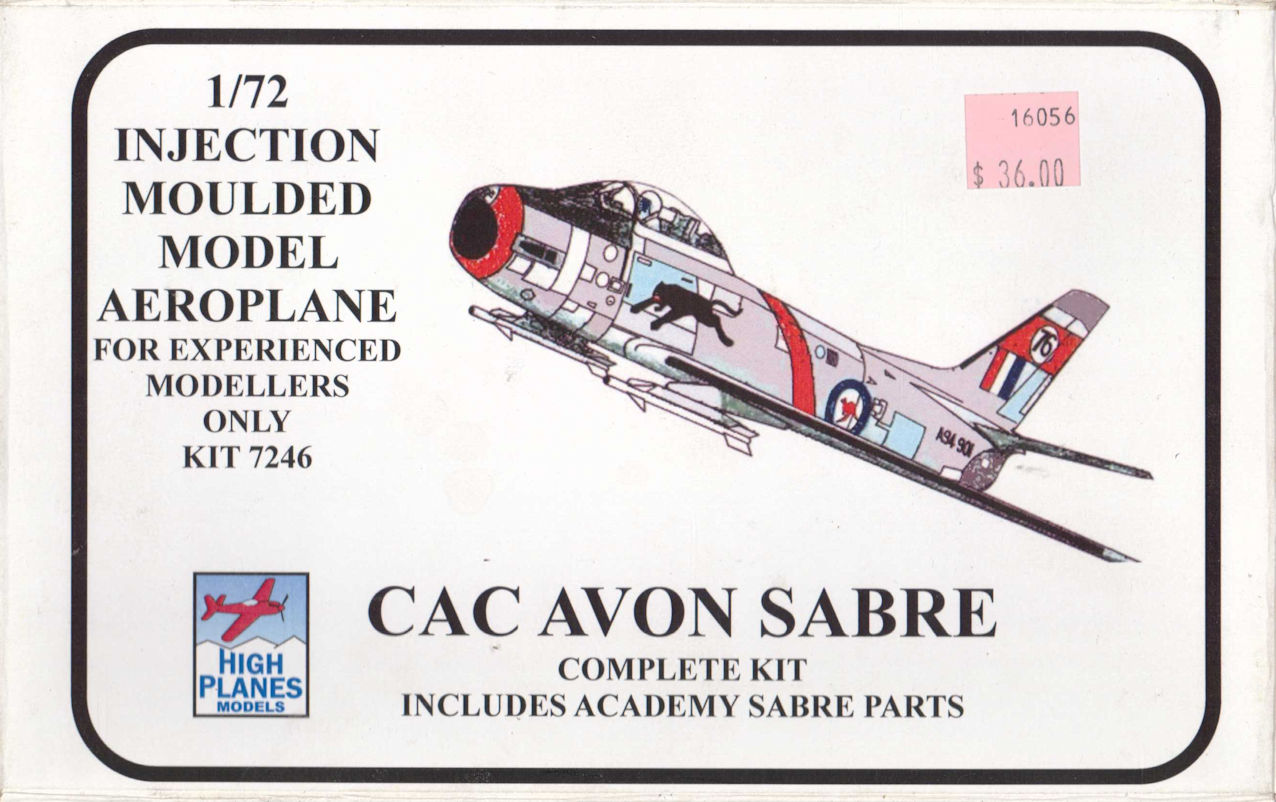
So I lifted the lid on this kit with trepidation, looked briefly, gasped in horror and put the lid back on again. What I got for my money was two roughly hewn fuselage halves and a nose in blue plastic and the rest of the kit was the standard Academy F-86F kit. I have looked at the kit several times since but lacked the courage to attempt making it. Eventually, however, I decided that if I didn’t make it now I never would. Besides, I now only need to make a couple of models and I will have made all the main RAAF fighters and I figured that making this model would give me plenty of material for this Workbench Note.
For those of you too young to remember this kind of thing, the CAC Avon Sabre was basically a licence built North American F-86F Sabre with a redesigned fuselage to accommodate the Rolls Royce Avon engine which was shorter, fatter and more powerful than the engine fitted to standard F-86s. I have no real idea why the RAAF chose this hybrid but suggest that perhaps it was because ‘Pig Iron Bob’ was the Prime Minister at the time and he was an old Empire Man (see the final volume of Manning Clark’s History of Australia). They began entering service in the mid 1950s and were still flying for the RAAF by the 1970s.
The real horror of this kit were the blue plastic parts supplied by High Planes. They may be accurate but they were very roughly moulded and needed a lot of preparation before even the fuselage halves would fit snugly together. It was the same for the air intake which did not fit squarely onto the fuselage halves after the clean up. Next came the problem of fitting all the Academy parts like the cockpit parts, air intake trunk and exhaust into the fuselage halves because there were no locating points inside the fuselage for them, or any indication of where they were supposed to go.
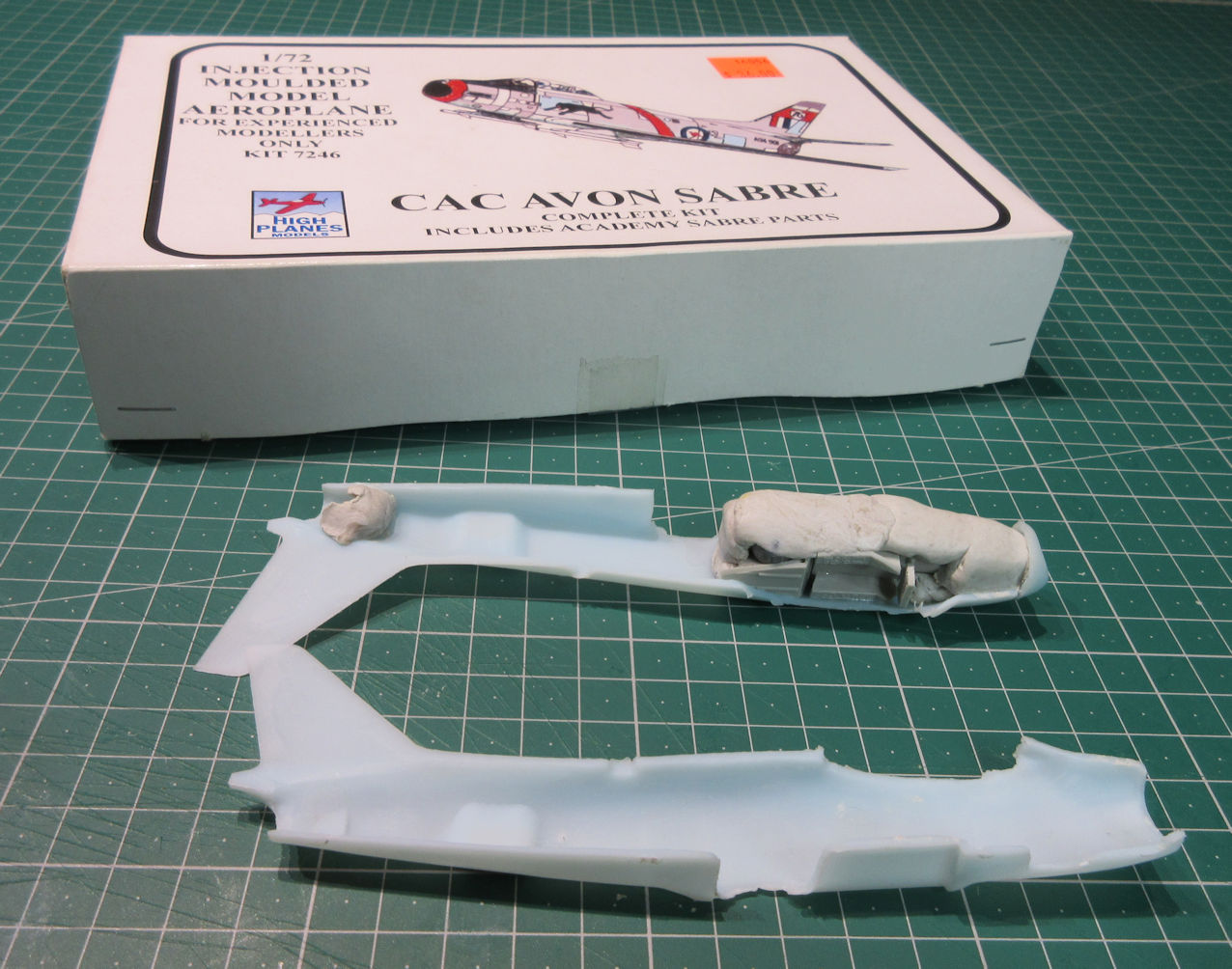
After several and various attempts I finally hit on the idea of taping the fuselage halves together and gluing the intake to one of them. That, after all, gave the basic shape of the Avon Sabre. Then I glued the air intake trunk behind the intake and then fitted everything else necessary around them. Since there were no locating points I used lots of Selley’s Knead It instead to locate the parts. It takes a few minutes for Knead It to set so I had time to wriggle everything into place before it set. Knowing that this model was bound to be a tail sitter I was generous with the material and added in a few little lead weights where possible, killing two birds with the one stone.
For some unknown reason the fuselage halves have the holes for the airbrakes moulded into them. If I’d been smart I would have made this mode with air brakes extended but I like my aircraft clean. Unfortunately the Academy air brakes and the High Planes holes for them bear little similarity to each other and resolving that problem also cost me some detailing on the fuselage sides.
Finally came the task of joining the High Planes fuselage with the Academy wings. Fortunately there was a great deal more plastic on the fuselage than there needs to be so I spent several hours trimming and fitting, trimming and fitting, trimming and fitting, ad nauseam, until the marriage of the parts was finally arranged.
By the time I’d reached this stage I reckoned I’d tempted the modelling gods enough to try any more fancy stuff. The kit include drop tanks and I saw a few pictures of Avon Sabres with them, but they detract from the look of the aircraft. Some of these aircraft were also fitted to launch Sidewinder missiles but I wasn’t keen on tempting the aforementioned gods by attempting to scratch build they pylons and rails myself and, besides, they also detract from the look of the aircraft.
If you are feeling braver than I, Red Roo Models will sell you the basic Avon Sabre kit with additional parts to make one test firing Firestreak missiles or another kit with slats so you can make the early version which was fitted with them. My only advice with them is, ‘help yourself and good luck’.
All RAAF Avon Sabers were painted in the same silver lacquer paint which is, I think, well represented by Tamiya rattle can AS-12. They all have the same large black anti-glare panel on the nose but there is some variation in the colours and styles of trim for different squadrons. A good feature of the High Planes kit is the decal sheet and instructions for them which offer several options including a couple of aerobatic teams. The only decals offered for a standard squadron aircraft is A94-971 which flew with 3 Squadron for a while, so I modelled that aircraft.
Not everything was rosy with the decals, however. The kit provides white blank decals for the roundels, no doubt give extra density to the white. However, some of them are a fraction of a millimeter wider than the decals that go over them, leaving the thinnest of white rings around them. I was not happy with this but, after a little intemperate language and thoughts that a ‘real modeller’ would do something to solve the problem, I realized that I’d reached the ‘full speed ahead and damn the torpedoes’ stage with this model and decided to try not to see that problem in the future. On the other hand, the drawings in the kit instructions show walkway lines on the upper wings surfaces that are not on the decal sheet so I scanned them from the instructions, enlarged them a little and printed them on some blank decal paper to go on the model.
There are around 60 stencils for this model and anyone who has made a model of one of those US Navy F-4s will know how tedious applying those little buggers can be. I was tempted not to bother but I’m glad I did because they add a touch of verisimilitude to what turned out to be a pretty little model.
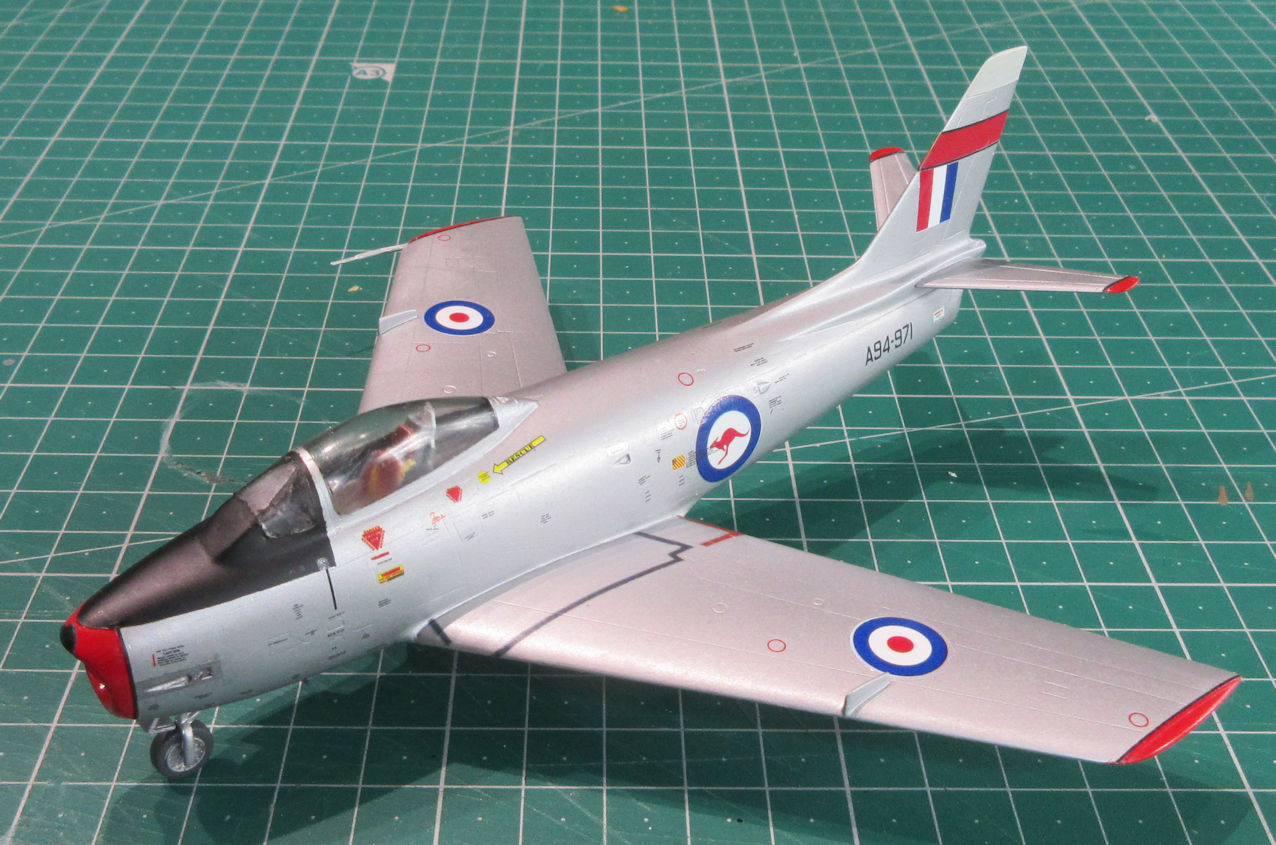
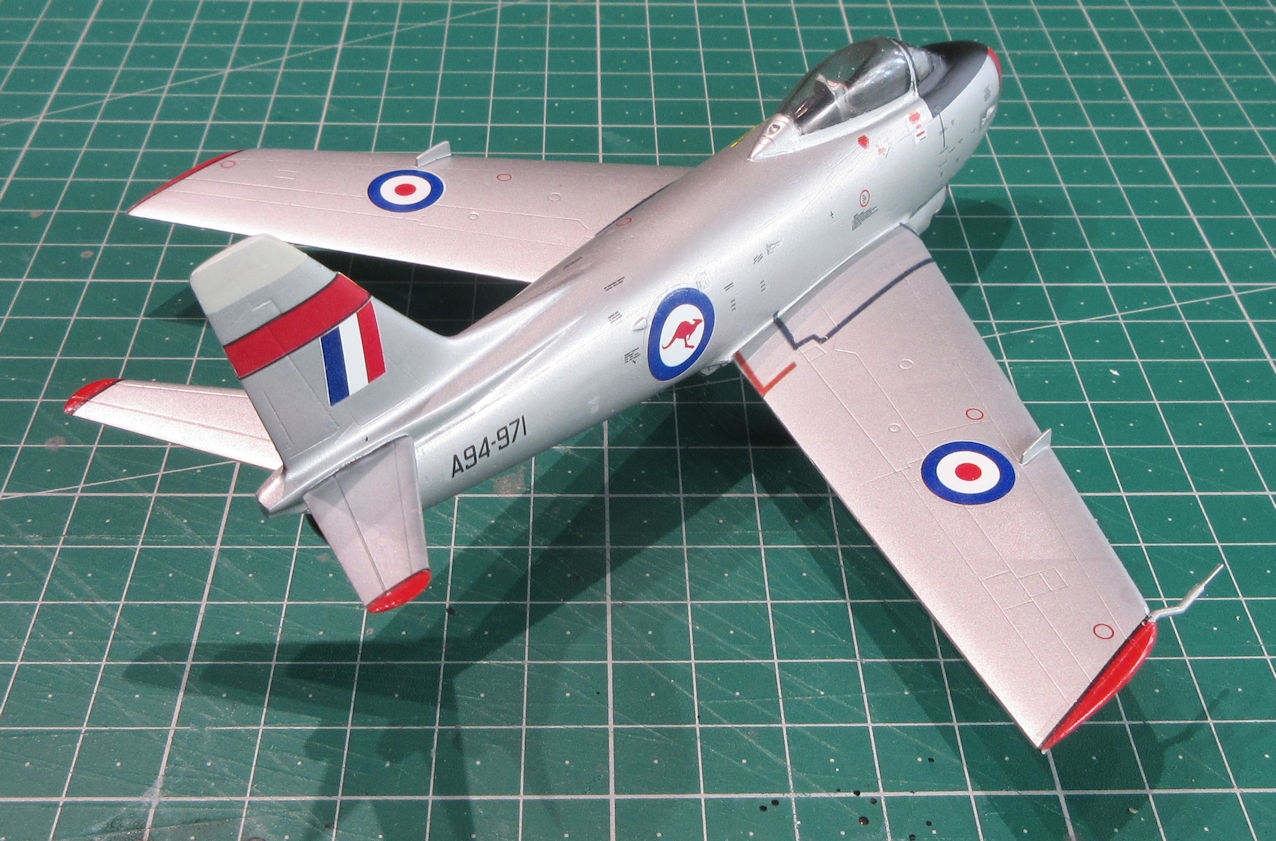
Leigh Edmonds
August 2023
